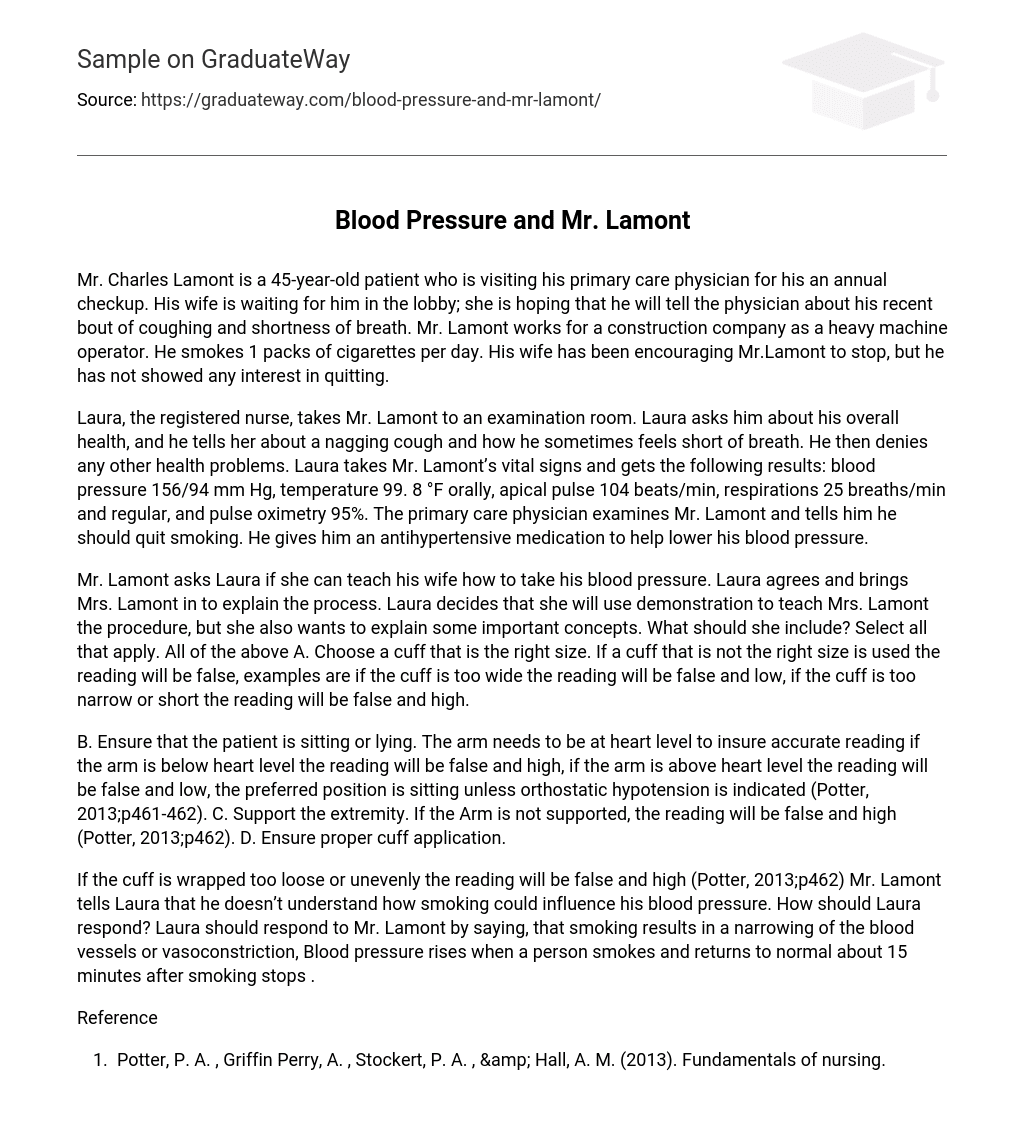Mr. Charles Lamont, a 45-year-old patient, is visiting his primary care physician for his yearly check-up. In the waiting area, his wife hopes he will discuss his recent coughing and difficulty breathing with the doctor. Mr. Lamont works as a heavy machine operator in a construction company and smokes one pack of cigarettes every day. Despite his wife’s urging to quit smoking, he remains uninterested.
Laura, the registered nurse, brings Mr. Lamont to an examination room and inquires about his overall well-being. Mr. Lamont indicates experiencing a persistent cough and occasional breathlessness but denies any other health issues. Laura documents Mr. Lamont’s vital signs: blood pressure is 156/94 mm Hg, temperature reads 99.8 °F orally, apical pulse measures 104 beats per minute, respirations maintain a steady rate of 25 breaths per minute, and pulse oximetry displays a level of 95%. Following the examination, the primary care physician advises Mr. Lamont to cease smoking and prescribes an antihypertensive medication for reducing his blood pressure.
Mr. Lamont requests that Laura instruct his wife on how to correctly measure his blood pressure. Laura agrees and introduces Mrs. Lamont to explain the process. In order to effectively teach Mrs. Lamont, Laura decides to demonstrate while also discussing important concepts related to the procedure.
- It is essential to choose a cuff that fits properly, as using one that doesn’t will result in inaccurate readings. For instance, if the cuff is too wide, the reading will be falsely low; conversely, if the cuff is too narrow or short, the reading will be falsely high.
B. To ensure an accurate reading, the patient should be positioned with the arm at heart level. If the arm is below heart level, the reading will be erroneously high, and if it is above heart level, the reading will be erroneously low. Sitting is usually preferred unless orthostatic hypotension is present (Potter, 2013; p461-462).
C. Additionally, supporting the extremity can help prevent false high readings (Potter, 2013; p462).
D. Lastly, it is crucial to apply the cuff properly.
If the cuff is not wrapped tightly and evenly, the reading will be inaccurate and show a higher value (Potter, 2013; p462). Mr. Lamont expresses confusion about how smoking can affect his blood pressure. Laura should explain that smoking causes blood vessels to narrow or constrict, resulting in increased blood pressure. Additionally, blood pressure typically returns to normal approximately 15 minutes after quitting smoking.
Reference
- Potter, P. A. , Griffin Perry, A. , Stockert, P. A. , & Hall, A. M. (2013). Fundamentals of nursing.





